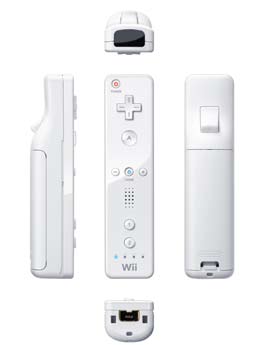Inspired by this, physicist Rolf Hut of the Delft University of Technology has built a Wiimote wind sensor. In a Wired Science report, Hut comments, “It was just a bendy pole with an empty bottle on top with an LED light on the bottle.” It was built in a single day, and a little soldering is all it took.
If the report is to be believed, there is nothing you cannot sense with a Wiimote and an LED light. Of course, it might not be the best way of sensing a parameter, but you can definitely find a way out with it. For example, you can put a Wiimote atop a collapsing building and find out how fast it fell.
In another success story, Willem Luxemburg, a hydrologist at the same university as Hut, demonstrated a water-level sensor made from a Wiimote and a plastic boat. This sensor solves a problem that has intrigued hydrologists for long—measuring evaporation on a body of water. An acceptable, expensive but inaccurate technique followed till date is to place vessels full of water near or atop the water body and put pressure sensors in them. The sensors record the drop in pressure as the water evaporates. You can measure it more easily with a $40 Wiimote adapted for the purpose.
According to the Wired Science report, “The Wiimote could overcome evaporation-measurement problems. It has a tri-axial accelerometer and a high-resolution, high-speed infrared (IR) camera which can sense movement with better than 1-millimetre accuracy. Luxemburg’s team tested it in a floating evaporation pan, using a float with an LED. With a Wiimote aimed at the float, and some hacking and programming of the Wiimote’s output, they were able to get highly accurate, real-time data on water level wirelessly sent to a laptop. The IR camera can track up to four LED lights at once, so scientists can use several floats to calculate the water’s plane. To be as accurate with pressure sensors, you would need more and costlier units.”
Sensors that consume less power
Apart from the several advantages, wireless networks have one significant disadvantage too over their wired incumbents—these consume more power, increasing the total cost of ownership of the sensor network in the long run.
A patent-pending media access protocol developed by researchers at the University of California at Berkeley might be the solution to this problem. This protocol is suitable for networks where the sensor nodes are power-con-strained but the network’s main access point has an unlimited power supply. It attempts to lower power consumption by minimising the power wasted due to radio operation inefficiencies at each node, and thereby increases battery lifetime.
In addition, this protocol offers excellent real-time delay guarantees, congestion control and data transmission fairness. When tested on a wire-less sensor network for traffic control, it demonstrated 1000 times lower power consumption than traditional contention network protocols. You can read more about this innovation at ‘http://techtransfer.universityofcali-fornia.edu/NCD/17287.html’
Applications in medical electronics
“One of the areas which are increasingly benefitting from wireless sensor technologies is medical electronics. According to a report by Electronics Industry Market Research and Knowledge Network, enabling wireless sensor solutions can reduce hospitalisation costs by promoting portable medical equipment. “This can collectively reduce costs for annual healthcare by $25 billion by 2012,” cites Tyagi of Freescale.

Freescale’s offerings in this space include the reference design for an automated home blood pressure monitor. This is an example of how the sensing, data communication and processing capabilities of Freescale’s Flexis QE128 product family can interact to create a handheld medical solution. This low-cost personal BP monitor is available at affordable price-points.
The company also offers piezoresistive pressure sensors that are suitable for medical instrumentation applications like portable digital blood pressure meters that can provide key diagnostics for healthcare patients.
Another concept put forth by the company is that of a personal electrocardiogram (ECG) monitor. Tyagi explains, “The high cost of a personal ECG monitor can be reduced through the use of new technologies which incorporate a microcontroller and digital signal processing into one device. A low-cost, single-chip solution by Freescale can help overcome this obstacle.”
Smart meters to help reduce electricity bills
Rising electricity bills can shock just about anybody. Companies want to reduce their energy costs, just as consumers seek more efficient means to man-age their own energy consumption. Smart meters could come to the rescue. These are essentially intelligent meters that can sense a home or organisation’s power consumption in more detail than a normal meter. This information can either be used by a consumer to better understand and manage his usage or relayed back to the service provider for billing purposes.




